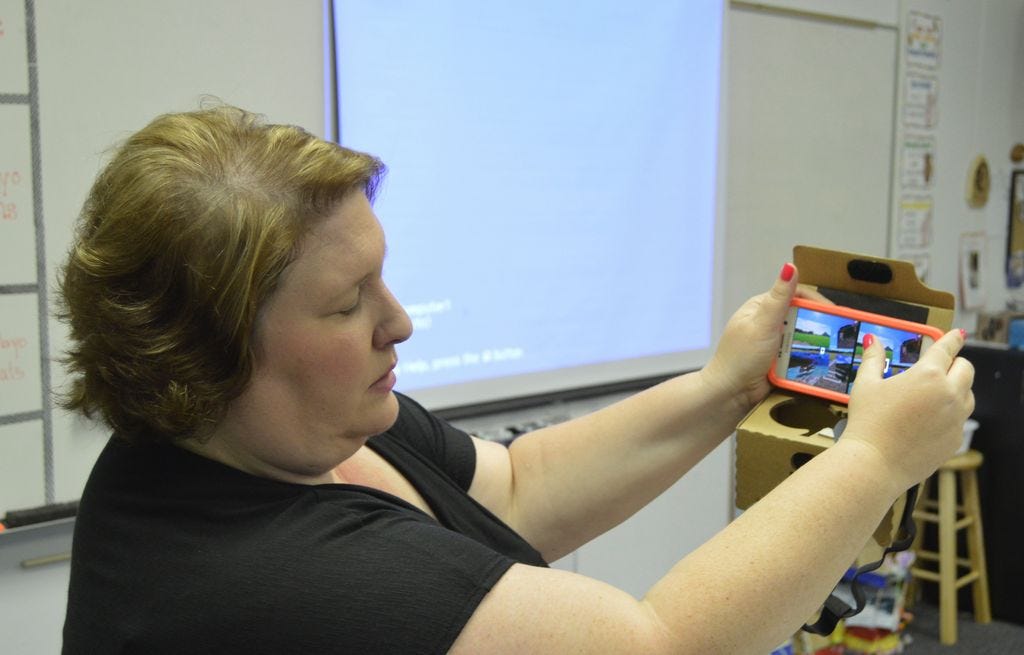
MILTON — Santa Rosa County Superintendant of Schools Tim Wyrosdick said “STEAM Innovate,” a science, technology, engineering, arts and math-based initiative, has exceeded expectations, and soon will make its way into SRC middle and high schools.
The school district, in partnership with Discovery Education, soon will complete the first year of STEAM Innovate professional development, or teacher training, at the elementary school level.
THINKING CRITICALLY, WORKING COOPERATIVELY
“STEAM is a transformation of how we teach and how students learn,” Wyrosdick said. “That is what we have driven into the minds of these teachers and these administrators. The end game is producing a student that not only has high-quality academic skills but can use those skills to solve problems, think critically and facilitate groups and work with others cooperatively.”
Wyrosdick said he is impressed with how educators have met the challenge of implementing STEAM into their classrooms and spreading the knowledge with fellow educators.
“What we did not anticipate is that STEAM has taken a life of its own,” Wyrosdick said. “These teachers automatically reached out to other teachers and coached them to being an (changed ‘a’ to ‘an’) innovative STEAM teacher.”
One of those STEAM teachers is Amanda Hutchins, a third-grade instructor at Jay Elementary School. Hutchins said she was originally hesitant about learning STEAM, but students’ reaction has made her a “believer.”
“I was excited about having the opportunity to stretch myself in my teaching practices, but … I was worried I would not be able to reach each student's needs based on their different learning levels effectively,” she said. “I have noticed through the interactive hands-on lessons my students are more engaged, behavior problems are minimal, and attendance has improved.”
Hutchins said STEAM gives students a multi-faceted learning experience. For example, her class uses Google Cardboard, a virtual reality experience when applied to a smart phone, to view the Mayan Pyramids, the San Diego Zoo and soon the Caribbean Islands.
“The reactions from the students are amazing,” she said. “Technology is a staple and is incorporated into my classroom on a daily basis through the use of Quick Response Codes, educational websites and apps like Plickers, and Today's Meet. The students have also started presenting, filming and editing videos with the use of Do Ink Green Screen app.”
Hutchins said her class also regularly works collaboratively on engineering projects, most recently on creating Cinco de Mayo parade floats.
TEACHERS TAKING RISKS
At the elementary school level, Wyrosdick said there are currently 41 fully trained STEAM teachers; Wyrosdick estimates more than half of the elementary school faculty “have already embraced and made the transition to an innovative classroom.”
The school district has (deleted repeated ‘shown’) further shown support by providing elementary school teachers with signage outside their classroom stating the teacher is attempting to educate in an innovative way.
“We wanted the teacher to take a risk and try something new without having this evaluative burden on top of it,” Wyrosdick said.
The initiative is also encompassing talent from outside the school system in the form of ambassadors. “An ambassador is anyone who sits in any profession that uses technology, basically any profession,” Wyrosdick said. “What we want from those STEAM ambassadors is their guidance.”
These local professionals are key to helping students adapt to a workforce, Wyrosdick said. STEAM aims to accomplish that through promoting critical thinking, using technology to solve problems and being able to work with each other to problem-solve.
Parents’ response has also been positive. In addition to forwarding several parents’ emails praising STEAM to the Press Gazette, Wyrosdick said he has not received one complaint about the new teaching initiative.
As for results on how effective STEAM has performed in improving academics, Wyrosdick said the school district seeks input from the teachers, and the University of West Florida is conducting an independent review of the past year to determine impact.
Wyrosdick expects to have the results by June.
This article originally appeared on Santa Rosa Press Gazette: Santa Rosa school district celebrates one year of STEAM
